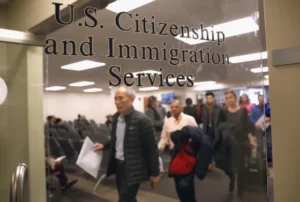India leads in remittances: Money flows across world borders every single day. Workers living in foreign lands often send their earnings back home to support families. This global money movement helps millions of people survive, and thrive in developing nations worldwide.
India currently receives the most remittance money of any country on Earth. Your understanding of this topic might change how you think about global economics and immigration policy impacts.
India leads in remittances: Global Money Transfers
Remittances represent money that migrant workers send back to their birth countries. These funds often provide vital support for basic needs like food, shelter, and education costs. Many families depend entirely on these overseas payments for survival.
Workers typically use banks, money transfer services, or digital platforms to send funds home. Each transaction costs money through fees, and exchange rates that reduce the total amount received.
The World Bank tracks these money flows carefully each year. Their data shows which countries receive the most funds, and where the money comes from originally.
India leads in remittances: India’s Leading Position
India dominates the global remittance market by receiving over $100 billion annually. This massive amount exceeds what most entire nations produce through their economies each year.
Several factors contribute to India’s leading position:
- Large diaspora communities living worldwide
- Strong family connections across borders
- Growing middle-class abroad
Indian workers live in Gulf states, North America, Europe, and other developed regions. They often earn significantly more money than they could make at home. This income difference creates strong incentives to send money back regularly.
However, this success story might face serious challenges ahead. Political changes in major destination countries could affect how much money flows back home.
Trump’s Potential Tax Impact
Trump’s tax policies during his presidency already affected international money flows in various ways. Future policy changes could create even bigger impacts on remittance patterns globally.
Tax policy affects remittances through several mechanisms:
- Higher taxes reduce disposable income available for sending home
- Complex regulations make transfers more expensive, complicated
- Immigration restrictions reduce the number of potential senders
When workers face higher tax burdens, they often reduce discretionary spending first. Remittances frequently fall into this category since families abroad might understand economic pressures better than local expenses.
Meanwhile, stricter immigration policies could reduce the total number of workers living abroad. Fewer workers means less total money flowing back to home countries like India.
India leads in remittances: Economic Consequences for Families
Reduced remittance flows create serious problems for receiving families back home. Many households budget their entire lives around expected payments from relatives abroad.
When these payments decrease or stop completely, families often struggle with:
- Meeting basic food, and housing needs
- Paying for children’s education expenses
- Accessing healthcare services when needed
Rural communities feel these impacts most severely since they often have fewer local economic opportunities available.
The remittance system provides more than just money transfers. It represents lifelines connecting families separated by thousands of miles and different economic systems.
Regional Variations Matter
Different regions send money home at varying rates depending on local economic conditions, and cultural factors. Gulf states typically generate high remittance volumes because workers live there temporarily while maintaining strong home ties.
North American and European countries also contribute significantly but workers there might integrate more permanently into local communities. This integration sometimes reduces long-term remittance sending patterns over time.
Tax policy changes affect these regions differently based on existing tax structures and immigration policies already in place.
Alternative Solutions Emerging
Technology offers new solutions for reducing remittance costs and improving the efficiency of international money transfers. Digital platforms often charge lower fees than traditional banks or money transfer services.
Blockchain technology and cryptocurrency systems promise even lower costs for future transfers. However, regulatory uncertainty makes widespread adoption difficult currently.
Some countries explore bilateral agreements to reduce transfer costs and simplify procedures for their citizens working abroad.
India leads in remittances: Looking Forward
The future of global remittance flows depends on multiple factors including economic growth, immigration policies, and technological developments. India will likely maintain its leading position due to its large diaspora, and strong family connections.
However, policy changes in major destination countries could significantly impact total volumes. Workers and families need to prepare for potential reductions in money flows.
Understanding these dynamics helps explain why immigration policy and tax policy discussions matter for millions of families worldwide who depend on remittance income for survival.











Be First to Comment